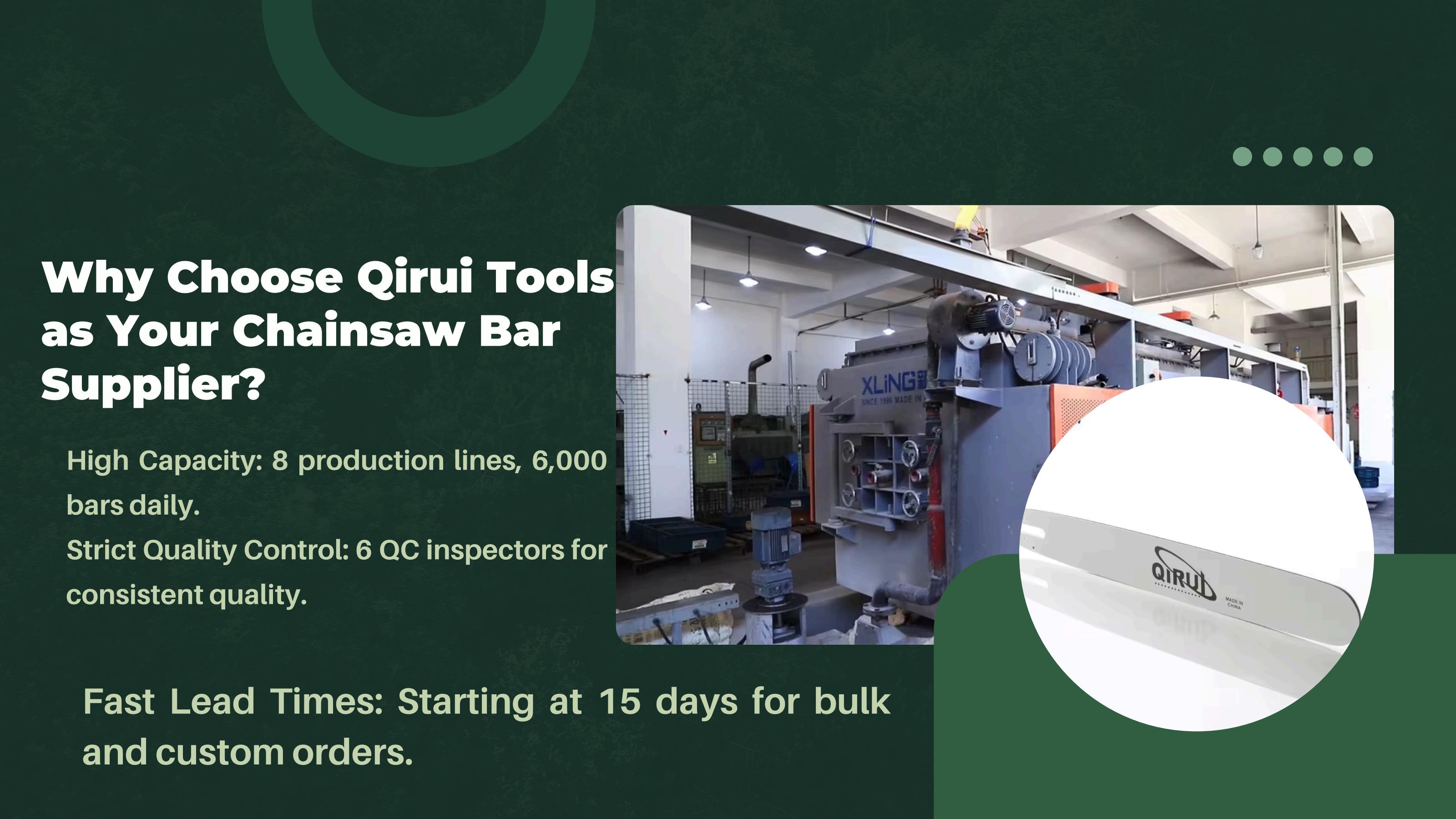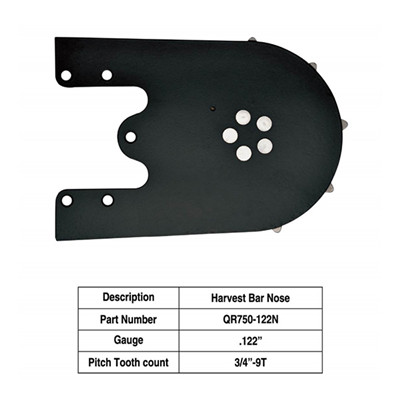Contact Us


News content

Chainsaw bars, often referred to as guide bars, are an integral component of any chainsaw. These sturdy, elongated metal bars serve as the guide for the cutting chain, dictating the precision and efficiency of the saw. Whether you're a seasoned professional or a DIY enthusiast, understanding the nuances of chainsaw bars is crucial in selecting the right one for your cutting needs.
Before delving deeper into the world of chainsaw bars, let's explore their fundamental structure. A typical chainsaw bar consists of several key parts:
1. Bar Body: The main part of the chainsaw bar, usually made of steel, which serves as the track for the cutting chain.
2. Groove or Rail: The guide slot in the bar body where the cutting chain runs.
3. Nose: The front tip of the bar, which can be sprocket-nosed or solid-nosed, depending on the design.
4. Mounting Holes: These holes are where the bar attaches to the chainsaw's housing, securing it in place.
Chainsaw bars come in various sizes, typically measured in length. The size of the bar directly influences the type and size of the wood you can cut effectively. Understanding the sizing system is essential for selecting the right chainsaw bar for your tasks.
The length of a chainsaw bar determines the cutting capacity, i.e., the diameter of wood it can effectively handle. Smaller bars, around 12 to 14 inches, are suitable for light tasks and trimming branches. Meanwhile, longer bars, ranging from 20 to 36 inches or more, are designed for heavy-duty cutting, such as felling large trees.
It's crucial to ensure that the bar size you choose is compatible with your chainsaw model. Manufacturers specify the maximum bar length that their chainsaws can safely accommodate. Using a longer bar than recommended can lead to safety hazards and may strain the chainsaw's engine.
Understanding the different types of chainsaw bars available can significantly impact your cutting experience. Here are some common varieties:
Sprocket-nosed bars have a sprocket tip at the nose, allowing the chain to rotate smoothly around the bar. These bars reduce friction, enhancing cutting performance and prolonging the lifespan of the bar.
Contrary to sprocket-nosed bars, solid-nosed bars feature a one-piece construction without a sprocket. They offer increased durability and are often preferred for cutting through harder materials.
Laminated bars consist of layers of metal that are welded together. They are lightweight, making them ideal for tasks that require maneuverability without compromising on strength.
Some high-end chainsaw bars come with replaceable sprocket tips. These tips can be changed when worn out, extending the life of the bar and improving cutting precision.

When choosing a chainsaw bar, several factors should influence your decision-making process.
Consider the frequency and intensity of your cutting tasks. For occasional light work, a shorter bar might suffice, while professionals or those dealing with heavy-duty cutting should opt for longer and more durable bars.
The type and size of wood you intend to cut should align with the bar's cutting capacity. Ensure the bar length can comfortably handle the diameter of the wood you typically work with.
Ensure the bar you choose is compatible with your chainsaw model. Consider the power and specifications of your chainsaw, as using an incompatible bar can affect performance and safety.
Evaluate the maintenance requirements and durability of the chainsaw bar. Some bars require more frequent maintenance, while others offer enhanced longevity and resilience against wear and tear.

Proper maintenance of your chainsaw bar is essential for optimal performance and longevity. Here are some maintenance tips to keep your bar in top condition:
After each use, clean the chainsaw bar thoroughly to remove sawdust, debris, and resin buildup. A clean bar reduces friction and prevents premature wear.
Keep the bar well-lubricated using chainsaw bar oil. Proper lubrication ensures smooth chain movement and minimizes heat generated during cutting.
Regularly check and adjust the chain tension to prevent it from becoming too loose or too tight. A properly tensioned chain improves cutting efficiency and safety.
Periodically inspect the chainsaw bar for signs of wear, such as bent or worn-out rails. Replace the bar if you notice significant damage to ensure safe and efficient cutting.
A chainsaw bar plays a pivotal role in the performance and efficiency of a chainsaw. By understanding the different types, sizes, and maintenance requirements, you can confidently select the right chainsaw bar for your specific cutting needs. Remember to prioritize safety measures and proper maintenance to prolong the lifespan of your chainsaw bar and ensure optimal cutting performance.
More
Chainsaw bars come in various sizes to suit different cutting needs.Common chainsaw bar lengths include 12 inches, 14 inches, 16 inches, 18 inches, 20 inches, 24 inches, 28 inches, and even longer. The choice of bar length depends on the type of cutting tasks you plan to perform. Smaller bars are suitable for light-duty tasks and precision cutting, while longer bars are designed for heavy-duty and professional applications. It's important to select the right bar length that matches your specific cutting requirements and the power of your chainsaw.Qirui’s best-selling sizes: 48, 52, 72, and 76-Inch Chainsaw Bars. Leave an email or WhatsApp in the comments section and our business manager will send you the details!
When it comes to cutting power and efficiency, having the right tools can make all the difference. If you're looking for a guide bar that can maximize your cutting power, then the 880 Long Chainsaw Guide Bar is a perfect choice.
Choosing the right saw bar is crucial for achieving the best results in wood cutting. Your saw bar is your tool for shaping wood according to your needs. Make the right choice for optimal outcomes.
More
Email: qirui@qiruibar.com
Tel:0086-571-82308666
Add: No. 390, Xiangdafang Industrial Park, Wenyan Street, Xiaoshan District,Hangzhou,Zhejiang,China
Website: www.qiruibar.com



Contact Us
Contact Us
